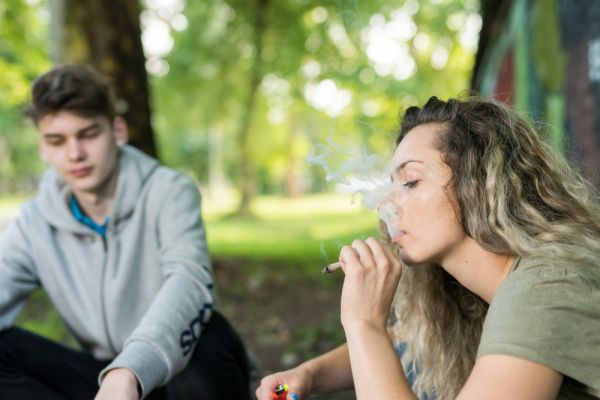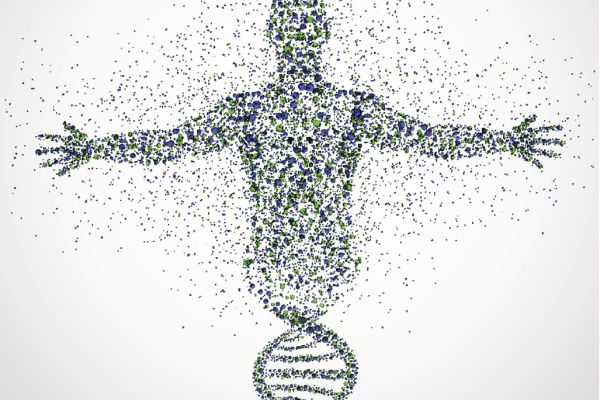The Landscape of Addiction
Shifting patterns of illicit drug use and prescription drug abuse indicate that addiction reflects social and cultural conditions at least as much as it does the powers of any substances or of individual vulnerability. Drug problems are especially linked to a person's age and life stage and to the availability of opportunity and future prospects. As a 2017 report by the National Academies of Sciences, Engineering and Medicine observes, “The opioid epidemic's toll is felt across the life span and in every sociodemographic group, but more heavily burdens vulnerable populations, such as those in economically depressed areas of the country.”
Surveys show that, in industrialized countries, illicit drug use is primarily a problem of young males between the ages of 18 to 25. Prescription drug use is a problem more among middle-aged and older women. Moreover, problematic drug use varies significantly not just by gender and age but by such sociodemographic factors as ethnicity, education, geographic area, and religiosity.
On This Page
- How has drug use changed over time?
- Does addiction stem from the drug itself or the conditions that make it attractive?
- What environmental factors are known to influence addiction?
- How does unemployment influence addiction?
- How does age influence addiction?
- How does social isolation contribute to addiction?
- How has alcohol use changed?
- How has the COVID-19 pandemic affected addiction?
One of the most notable examples of change in drug use problems is the rise in opioid addiction, and overdose deaths, starting in the late 1990s, with a surge in prescription opioid painkillers, followed by a rise since 2010 in addiction and overdose deaths from the illicit opiate heroin. At the same time, the profile of heroin users changed as well, from a largely inner-city, minority-centered population to one more widely spread age-wise, geographically, and economically.
According to a report in JAMA Psychiatry, heroin users are now primarily white men and women in their late 20s living outside of large urban areas. The report indicates that they were introduced to opioids through prescription drugs and progressed to heroin in part because it is cheaper and more readily available.
The close relationship of the opioid epidemic to patterns of pain management reflects an increase in both supply of and demand for painkillers at the end of the 20th century and the beginning of the 21st century, a period of dramatic technological disruption and accelerating economic disparity. The brain does not distinguish between sources of distress. It is noteworthy that at the same time economic conditions worsened for all but the top tier of earners and the loss of manufacturing jobs began eroding the middle class, neuroscientists demonstrated that both psychic pain and physical pain are experienced the same way by the brain.
Addiction is a challenging condition to understand, and views of it have changed over the years. For a long time, addiction was thought to result from the pharmacological properties of certain substances themselves. Over the 20th century, addiction was seen first as a moral failure to resist the temptations of addictive agents and, later, in an attempt to reduce stigma and encourage treatment, as a disease. But the disease concept, which focuses almost exclusively on individual biological and psychological vulnerabilities, does not hold up to increasing scientific scrutiny. Research from many disciplines demonstrates that many other variables influence rates of use and abuse of psychoactive substances—including alternative opportunities for establishing goals and finding meaning.
One of the most important pieces of evidence that addiction lies less in the properties of drugs but more closely reflects environmental factors and social conditions is the experience of returning Vietnam veterans in the 1970s. In a classic series of studies, psychologist Lee Robins reported on long-term use of heroin by post-Vietnam veterans. In Vietnam, heroin use was commonplace, the drug was readily available, and soldiers lived under disorientingly unpleasant conditions and the constant threat of attack. Rates of drug use and addiction were so high—34 to 50 percent—that that all U.S. troops were screened for addiction and detained for detoxification before being allowed to return to the U.S. But one year later, back in the U.S., in a radically transformed setting, with radically transformed future prospects, only 10 percent even tried the drug and only 1 percent became readdicted.
The harsh conditions, barriers to resources, and impediments to individual goals that poverty imposes have traditionally made it a strong contributor to drug use, whether heroin or nicotine, although the opioid epidemic, fueled by the overprescribing of painkillers, has diversified the populations at risk of addiction. While closely tied to poverty, unemployment has always been a significant independent risk factor for substance use and for relapse after treatment.
In a survey reported by the Federal Reserve Bank of St. Louis, covering the years 2005 to 2011, illicit drug use by the unemployed was three times that of the fully employed. There are social scientists who see unemployment itself as a disease, because it leads to deterioration of physical and mental health.
Job loss is a painful and often shameful experience. It is commonly perceived as a rejection and sets in motion a powerful negative evaluation of oneself and depressed mood. Studies of populations in many countries show that the psychological distress of unemployment can readily become an incentive to substance use—a way to escape and forget the reality— despite the decrease in income that job loss brings. Researchers have long observed that alcohol use increases during recessions. The loss of income following unemployment typically creates both financial and personal stress, and drug use is a way some people cope. In addition, work is a significant source of stability and structure and keeps people busy; unemployment increases time available for seeking and using drugs.
Unemployment may work through many other mechanisms to make substance use an attractive option. Job loss can lead to loss of social status and stigmatization, a source of stress especially for males, and is more closely tied to substance use among them. Work is also a significant source of meaning and purpose; it marshals motivation toward goals, a powerful source of psychological satisfaction and reward; absence of employment or job opportunity closes a major pathway to a sense of reward—but not the need for such feelings. In addition to energy and direction, work typically provides major opportunities for positive social relationships and social integration, and unemployment can profoundly increase isolation and loneliness.
According to a survey reported by the Federal Reserve Bank of St. Louis, “A person who moves from employment to unemployment observes an increase in his/her odds of consuming illegal drugs. This causality could be generated, for example, by the urge to appease the financial hardship imposed by unemployment on families, by the increase in spare time that comes with job loss, or by increased personal contact with the chronically unemployed.”
Recognizing that drug use is most common among males 18 to 25, some experts see addiction as a passage rather than a permanent problem. In this view problem drug use is seen as a developmental condition stemming from childhood adjustment and behavior problems, and users outgrow their substance use and mature out of addiction. Research demonstrates that "most people quit problematic drug use as they get older, with or without treatment,” because they can discern a direction and discover more purpose to their lives.
Social conditions such as isolation and feelings of loneliness are also strongly linked to substance use—and to almost every measure of decline in mental and physical health. Researchers studying animal models of addiction have found that social isolation increases craving for substances and that socializing offers relief. Under conditions of isolation, animals pay more attention to substance cues in their environment. Social interaction was found to protect against development of drug use and relapse to it. Studies show that among those who have recovered from addiction, the social isolation of unemployment can prompt relapse by triggering people to meet with old drug-user friends.
There are numerous pathways through which social isolation sets up conditions that make drugs use attractive. It makes people sad and stimulates feelings of deprivation and longing. It increases stress—both by intensifying the perception of stress from ordinary stressors and by raising levels of circulating stress hormones. And isolation increases the perception of pain, from which drug use can be seen to offer an escape.
Since 1984, the United States has had a minimum legal drinking age of 21, higher than in many other countries. But according to America’s National Institute on Alcohol Abuse and Addiction, 9 percent of full-time college students between the ages of 18 and 22 meet the criteria for an alcohol use disorder. Further, college alcohol problems are commonly a consequence of binge drinking, often to the point of blacking out. As a result, vodka is widely regarded as the leading date-rape drug.
While drinking has long been a part of campus life, drinking has moved beyond beer to favor hard liquor. It is especially popular before social encounters—a ritual called pre-gaming, in which students drink before they go out, as a way to relax themselves for conversation . The practice coincides with a decline in students’ social skills over the years and a marked rise in their (mis)perception of stress—both attributed largely to contemporary parenting practices in which the adults shield their children from disappointment and even jump in to solve children's normal peer conflicts.
Evidence suggests that overprotecting and overparenting children leaves them without the psychological resources to manage the ordinary challenges in life. Having encountered few disappointments in their overparented, overtrophied lives, many have not learned to handle difficulty. In the absence of skills to dispel disappointment or handle their own interpersonal problems, difficulty becomes catastrophe. And alcohol is needed to lubricate social encounters.
Data from many sources and anecdotal evidence suggest that one result of the pandemic is increased drug and alcohol use and abuse. Specifically, there has been a resurgence in opioid use. The Centers for Disease Control and Prevention reported that there were more than 81,000 drug overdose deaths in the 12-month period ending in May 2020, the highest such figure ever recorded. The CDC attributes the surge in drug overdose deaths to the disruption in daily life created by the pandemic among those being treated for addiction.
Mental health experts cite many reasons for increases in alcohol use and legal and illegal drug use during the pandemic. The confinement of lockdown and fear of illness have dramatically increased the prevalence and intensity of anxiety-related and other mental health disorders. For example, a survey of people with obsessive-compulsive disorder found that 72 percent experienced an increase in symptoms. By restricting activity, curtailing social life, and limiting access to usual sources of pleasure, confinement magnifies psychological distress of many kinds.
For many, the pandemic has caused deep suffering directly linked to increased substance use—loss of loved ones, loss of job, loss of income, social isolation. At the same time, being employed has created problems for families, burdening parents with the unrelieved stresses of schooling children, keeping them occupied and motivated in the absence of peer contact, providing three meals a day, and organizing the household—on top of the ordinary demands of parenting—all while trying to balance their own paid employment.
The pandemic, many have observed, is really two pandemics—the COVID-19 one and the mental health crisis it set off. The cumulative burden of real losses, restricted life, worry, and loss of outlets challenges even those with the best coping resources. For some, the stresses are so overwhelming they turn to unhealthy sources of relief.














